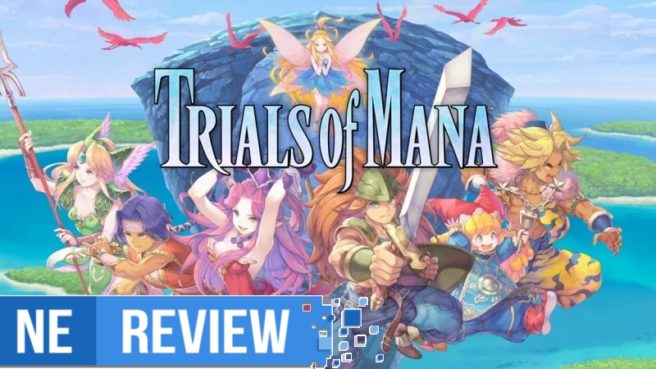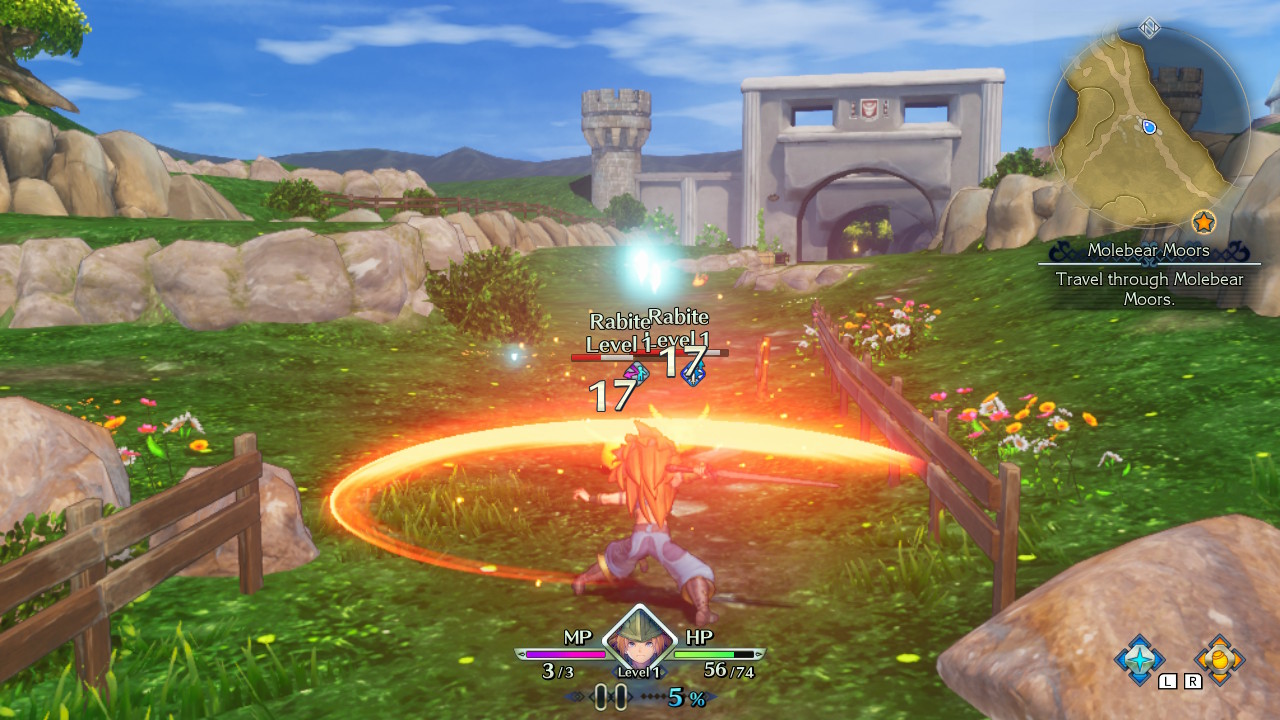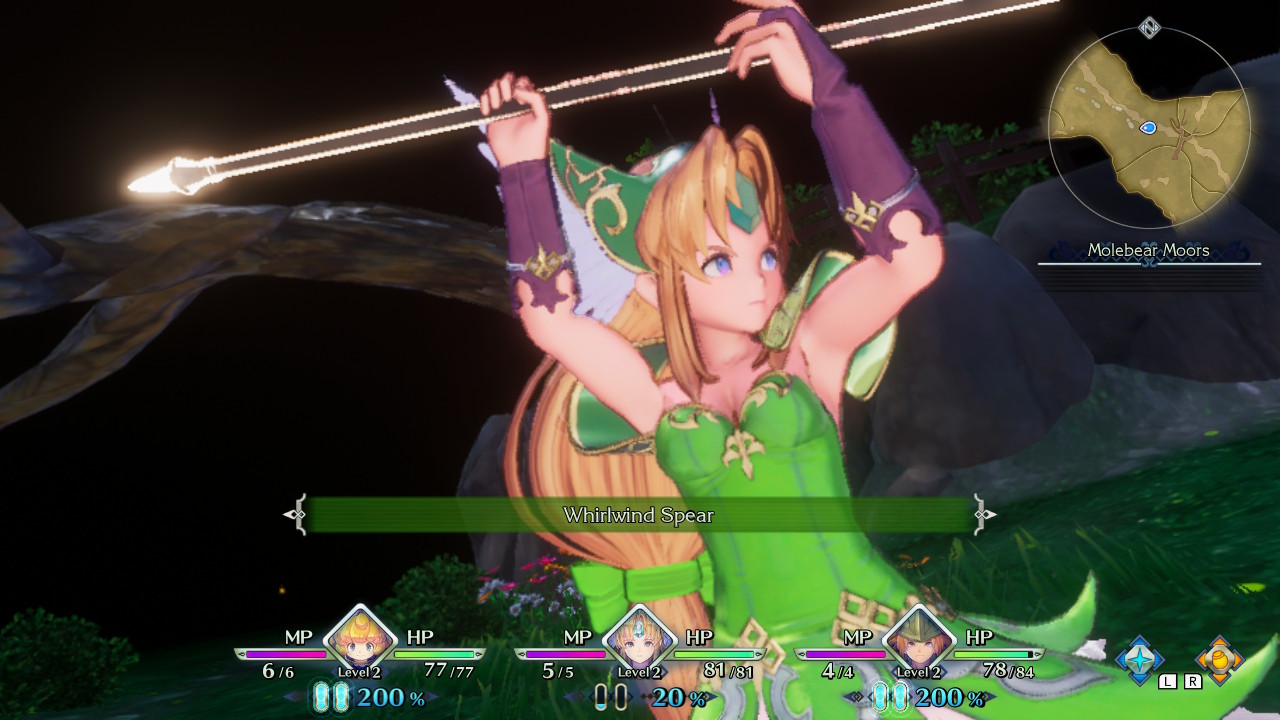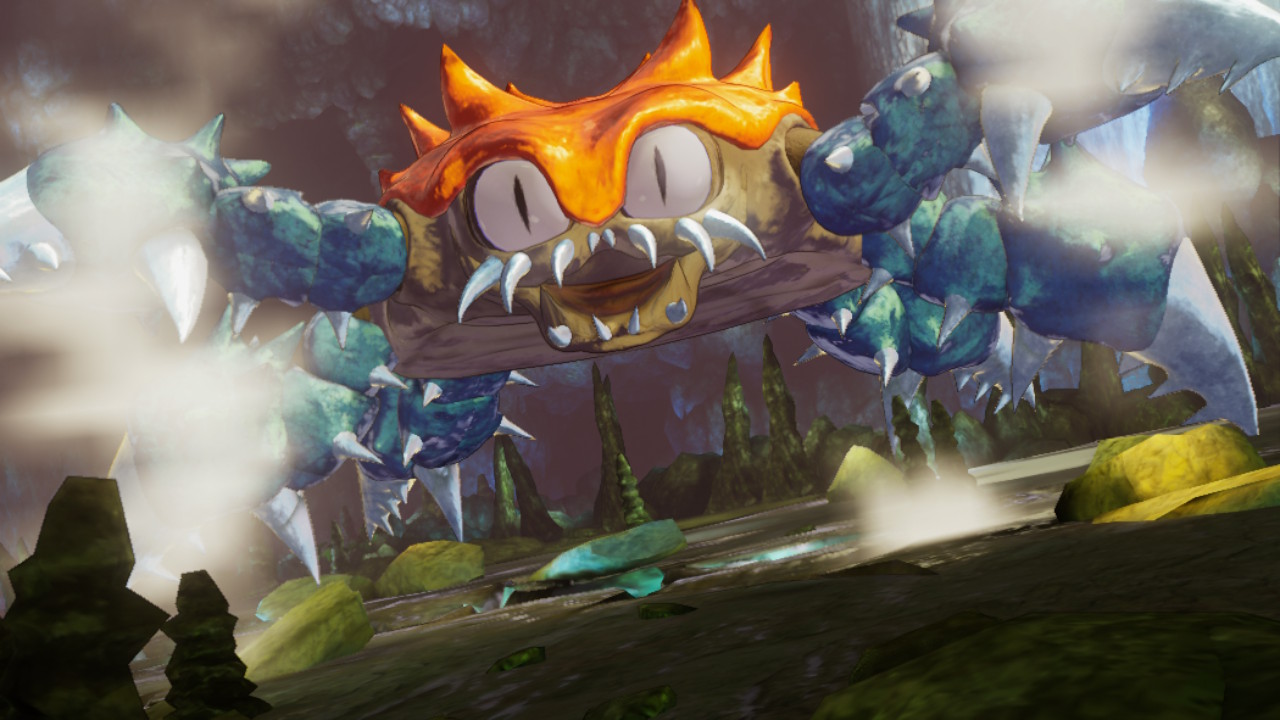[Review] Trials of Mana
System: Switch
Release date: April 24, 2020
Developer: Square Enix
Publisher: Square Enix
What started off as a spin-off titled Final Fantasy Adventure in 1991 would spawn a beloved yet niche series in Square Enix’s catalogue known as Mana. Nearly thirty years later, Trials of Mana gets the remake treatment, bringing its 1995 origins to the modern day with a stunning makeover and creative outlook that doesn’t just aim to recreate, but freshen and polish the game with a new outlook more suited for the JRPGs of today. The game certainly has elements of “a time that once was” with a sort of clichéd story and standard fantasy flare that doesn’t really bring anything new to the table, but that Mana charm still exudes through its gameplay.
In the game, players can choose three characters out of six total protagonists as they go on a journey to retrieve eight scattered mana stones before they’re found by the forces of evil. These include Duran, a swordsman with high attack power; Angela, who specializes in ranged magic and mass-targeting spells; Kevin, a fighter using his fists and transforms during the night; Charlotte, a healer and support class; Hawkeye, a thief-inspired character who’s fast and focuses on daggers with a high luck for finding items; and Riesz who specializes in spears with range attacks and support magic/summons. You’re free to go with any three you’d like, but the first you choose will be the core focus of the game, with occasional story pieces implemented from your supporting characters. The rest of the cast makes cameos at one point or another, but unless you play their respective stories to see how one of the three villains comes into play, they won’t provide much in your experience and may seem a little confusing at first as they create natural plot holes – referring to things and making remarks that are probably important to them but don’t mean anything really meaningful to your adventure.
The game puts a big emphasis on its story, which is great, but it’s almost in a beeline fashion. You can walk into a new area, simply speak to someone, and immediately leave and not be bothered to come back for quite some time. The majority of the maps you come across in Trials of Mana are beautifully done, including cities, landscapes, dungeons and more, and the main areas in which you’ll be fighting enemies are all unique and stand out from another, keeping distinction important as to where you are the enemies inhabiting them. Even basic caves have the occasional river, waterfall, or flora inside to keep things vibrant and a treat to look at. Hidden items and chests are scattered everywhere and can show up in some surprising places, like behind a tree tucked away in the corner of a map where you wouldn’t expect one. I’ve found many hidden items by accident, and it’s a joy to come across them all as it gives you more reason to go exploring and really uncover every square foot of a map. However, all of this can also easily be missed because of how unimportant some places may seem, sticking around for just a few moments to a cutscene or dialogue exchange only to have to leave immediately after since there’s not much else to do in certain locations. You can really tell which cities are considered hubs versus some smaller towns which serve as mere window dressing.
Combat in Trials of Mana has been overhauled and for the better. Since each character has their own uses and skills, battles can be tailored to the way you’d like by choosing the classes you prefer. As you level up and gain mana stones, more abilities will be unlocked, from moves you can use offensively to buffs and debuffs, as well as Linked Abilities which are shared between multiple characters for huge perks and bonuses. Leveling is done in a traditional fashion with experience points being gained from battles throughout your adventure, and giving you Training Points, or TP for short, to use for specific tree wheels tied to each character to unlock new skills. Through here you can learn new moves, choose to gain more mana or health, have a higher specific stat, and more as you naturally gain levels, and with the wheel containing a couple of different categories, you can tweak and adjust to your liking. Each category has a set amount of things you can unlock, but it’s all fairly linear and the screen doesn’t get too busy with information as you’re figuring out what it is you’d like to acquire next.
When battles are initiated, players go into a set field in which they’ll fight in. Jumping and dodging – which are new to Trials of Mana – make for a more flexible approach in combat that’s more fitting for its action-RPG nature. Though while playing on normal nothing ever seemed particularly tough, the ability to jump and dodge was still something I massively appreciated due to my history with hack and slash titles. It felt a lot more natural for the combat to play out like it did, so having that ability to jump into the air to hit a bee to knock them down while switching to a range to get an enemy in the distance and back to melee to continue pummeling foes on the ground felt really nice and refreshing for the Mana series. If for whatever reason you didn’t want to be in a battle, you can easily just go to any edge of the ring that’s displayed as your “fight zone” for a few seconds and the battle will end. It’s all done seamlessly with no loading of the sort.
Trials of Mana’s 20-30 hour campaign is a simple but fulfilling one that never feels like it overstays its welcome or asks too much of you. You’ll naturally make your way through it in a way that feels efficient, and road blocks are at a minimum here with never the need to feel like you need to dedicate an entire day of grinding because of a certain section. Progression is fluid and because of it makes it an accessible RPG for people who may not have that much time on their hands but love the genre.
The unfortunate part really is that, throughout the story, you have to sit through what may possibly be some of the most lackluster and uninspired voice acting in a game in quite some time, especially in the case of Charlotte, the game’s main healer who’s a child – but not really. The obnoxious tones of using W’s to sound “baby-like” such as being “weawwy weawwy scwared” is good enough reason to have her not be associated in your party no matter how good her skills may be. For everyone else, most of the main protagonists do an acceptable job at getting their lines across, but beyond that any characters that’s especially not important or is considered a support character just feels like a last-minute rush job. For all Trials of Mana has going for it, I found myself muting dialogue often.
Between your six playable characters, orchestrated soundtrack, vibrant environments, and easy to pick up gameplay, Trials of Mana finds itself to be one of the most accessible JRPGs in recent memory, serving as a way to have pure fun at your own pace. To some more hardcore enthusiasts, this may seem like a bit of let down or unfulfilling adventure, but Trials of Mana works well with what it’s got, and is more concerned with you just playing the game in a seamless fashion without worrying too much about going in-depth with character and inventory management – though of course the option is there so you can tweak and prepare to your liking. On Switch, Trials of Mana looks to get the same amount of love and attention as Dragon Quest XI S did, clearly making sacrifices but all in a tasteful way to make sure players get a stable experience that’s absolutely worth playing whether in handheld mode or TV mode. While resolution is lowered and some sacrifices were made, it’s a port that’s more than acceptable and feels right at home.
The Verdict
Unlike Secret of Mana and Adventures of Mana before it, Trials of Mana shows that not all remakes need to be a 1:1 recreation of the source material, so long as it respects it and follows a general guideline. The game is a from-the-ground-up recreation of the original 1995 game, bringing along a whole new perspective, fleshed out battle system, voice acting, and luscious environments that entice exploration and more in a simple yet fulfilling JRPG package with a variety of characters that can be handpicked by the player to tailor the gameplay experience to their liking. Trials of Mana is far from perfect, but it makes for a great pick up and play game that doesn’t ask for too much of your time despite the JRPG foundation it lays on as the story is linear and the gameplay is easily accessible with not much in the way of convoluted skill trees and super intense party management.
Review copy provided by the publisher for the purposes of this review.




